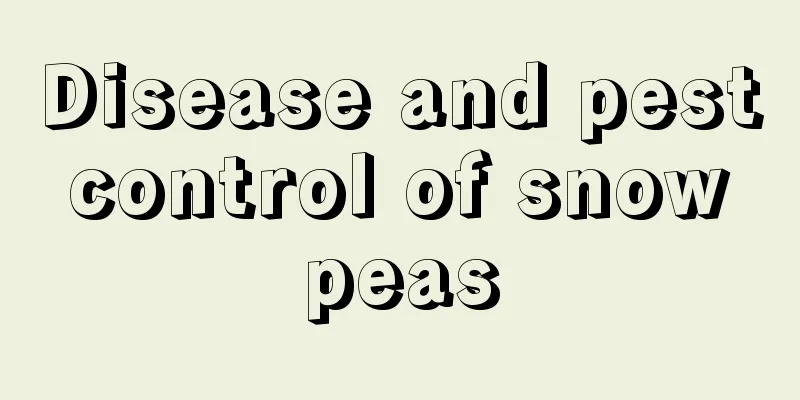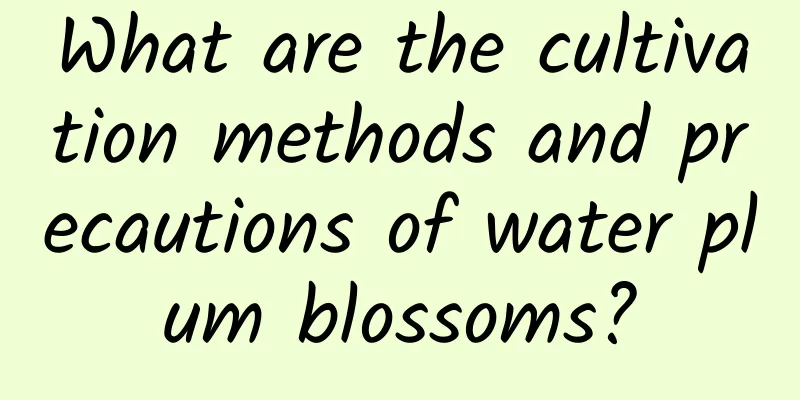Disease and pest control of snow peas

1. What are the pests and diseases?1. Disease. Common diseases of snow peas include blight, powdery mildew, anthracnose, and wilt, etc., which mainly damage the plants and leaves of snow peas. 2. Pests. The most common insect pests of snow peas are aphids, caterpillars, pod borers, etc., which mainly damage the stems, leaves, pods and other parts of snow peas. 2. Characteristics of Snow Pea DiseaseWhen planting snow peas, you must pay attention to observe the development of the snow peas. When it shows the following characteristics, brown spots will appear on the stems at first, the leaves will shrink and the color will fade. For example, in severe cases, the stems will rot and the plant will shrink. Generally, it has encountered diseases and pests. It must be dealt with and controlled in time! 3. Prevention and control methods1. Methods for preventing and controlling diseases.(1) When selecting snow peas, you should choose varieties with strong disease resistance. Good varieties can greatly reduce the probability of snow peas becoming diseased after they mature. (2) Regular crop rotation and planting of snow peas in combination with other plants that are less susceptible to diseases and insect pests can also improve the disease resistance of snow peas. (3) Apply fertilizer reasonably and appropriately, with more nitrogen fertilizer and less potassium fertilizer. Snow peas are fertilizer-loving crops. Applying more fertilizer can provide it with a large amount of nutrients, which can improve its immunity and strengthen its disease resistance. (4) Drug prevention and treatment. Spraying pesticides should be done in the early stages of the disease to prevent it from getting worse. Generally, it is done once every ten days, and about three times is enough. 2. Prevention and control of pests.(1) When insect infestation is first discovered, the affected dead leaves should be removed promptly to avoid cross-infection between leaves. (2) During the period of aphid migration, monitoring and control measures should be implemented to ensure timely prevention and control. (3) Pesticide control. In the early stage of larvae, it is necessary to choose appropriate pesticides to control the insects in time. Otherwise, the massive reproduction of pests will directly lead to the death of the entire snow pea plant. I hope the above content is helpful to everyone. I wish that the snow peas you grow can grow healthily and bear high-quality fruits! |
<<: Disease and Pest Control of Sugar Apple
>>: Disease and Pest Control for Brussels Sprouts
Recommend
What kind of crop is apple? Is it an agricultural crop?
What crop is apple? Apple is a plant of the genus...
Can Amaryllis be hydroponically cultivated? Hydroponics cultivation methods and precautions
Can Amaryllis be hydroponically cultivated? Amary...
What are the varieties of yew
Pacific Yew The Pacific yew grows on the west coa...
Is bougainvillea poisonous?
1. Is it poisonous? Although bougainvillea is a v...
Which is better, Allium orchid? How to grow Allium orchid and Allium orchid?
The difference between leek and chives There are ...
Components of a complete flower
1. Components of a complete flower A complete flo...
Is the frangipani tree suitable for home cultivation?
1. Is it suitable for domestic breeding? Under no...
Difference Between Canna and Bird of Paradise
1. Morphological characteristics 1. Canna. Its pl...
The difference between Artemisia serrata and Artemisia serrata
Differences between the leaves of Sterculia styra...
The flower language and cultural connotations of moonflower
Moonflower Flower Language Eternal Love The moonf...
How to dry and eat gardenia
1. Gardenia drying method If you want to eat gard...
Ginseng planting methods and time cultivation and planting technology
Ginseng planting time There are not many requirem...
How to grow ginseng fruit potted plants
1. Pot soil selection The ginseng fruit requires ...
Can I keep the cymbidium at home?
Is the chypre suitable for growing at home? There...
What should I do if the camellia leaves are curled?
1. Sun exposure Reason: Camellia is suitable for ...









